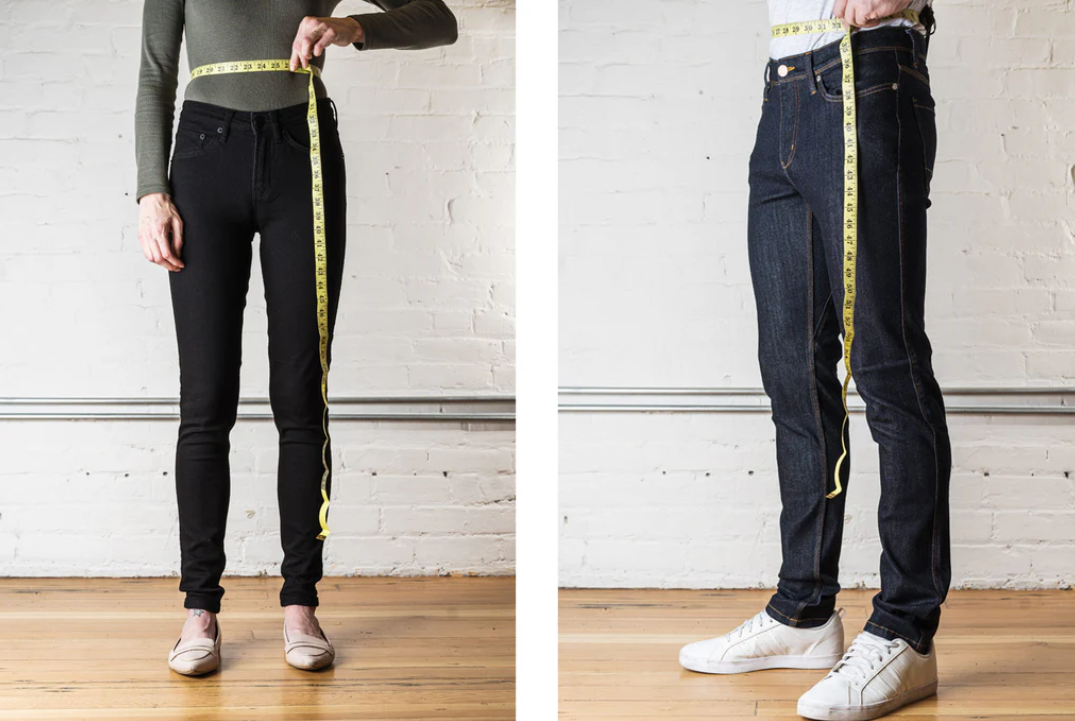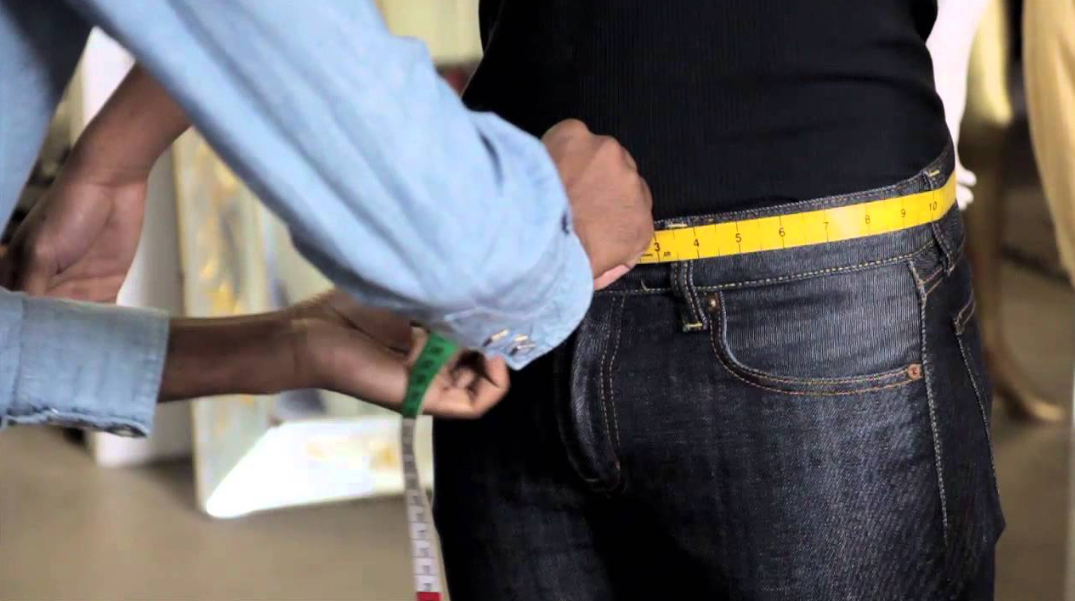Measuring your waist accurately for pants can be a tricky endeavor if you don’t have the appropriate knowledge. In this expert guide, we will walk you through a step-by-step process to ensure you get the most precise measurements. Start by locating your natural waistline, which is typically the narrowest part of your torso, found between your rib cage and belly button.
Using a tape measure, wrap it around your waist ensuring it’s parallel to the floor and fits snugly without digging into your skin. The measurement you get is your waist size. Remember to wear only lightweight clothing and breathe normally during the procedure to avoid any distortions. It’s also crucial to note that different brands may have varying sizing charts, hence, always refer to the specific brand’s guide before making a purchase.
Additionally, if your measurement falls between two sizes, opt for the larger size for a comfortable fit. A well-fitted pant can enhance your overall appearance and boost your confidence, making these measurements vital in your shopping process. Keep in mind, measurements should be taken periodically as changes in weight can lead to alterations in waist size.

Steps for Accurate Waist Measurement
To ensure accurate waist measurement, several steps must be followed meticulously. Firstly, ensure you’re wearing minimal clothing or something form-fitting that won’t interfere with the measurement. You should also ensure the measuring tape is snug, but not tight or loose, around your waist.
Secondly, locate your natural waistline, which is typically the narrowest part of your waist or the point just above your belly button. If you’re having trouble finding it, bend to one side and the crease that forms is your natural waistline. Thirdly, take the measuring tape and wrap it around your waist, ensuring it is parallel to the floor. Make sure the tape is not twisted or slanted as this could throw off your measurement. Fourthly, breathe normally and do not suck in your stomach as this can give an inaccurate measurement.
Once you’ve wrapped the tape around your waist, take note of the measurement. It may be helpful to use a mirror or have someone assist you to ensure the tape is in the right position and level. Finally, repeat this process a couple of times to ensure a consistent reading and record the measurement. Always remember that waist measurement is an important aspect of assessing your overall health and should be done accurately.
How to Measure Your Leg Length for Pants
Understanding how to measure your leg length for pants is crucial if you want to achieve a well-fitted and comfortable pair of trousers. First, you will need a flexible measuring tape and a friend to help you with the process. Begin by standing upright with your feet slightly apart – this will ensure an accurate measurement. The measurement for your leg length, also referred to as ‘inseam’, starts from the highest point of your inner thigh (or crotch area) and ends at the bottom of your ankle.
To start, your helper should place one end of the tape at the crotch area, ensuring it’s at the highest point. Then, they should run the tape along your inner leg, following the natural curve of your leg. It’s important to keep the tape close to your body, but not too tight – it should be snug but comfortable. The measurement should continue down to the bottom of your ankle for a full-length trouser measurement.
For cropped or ankle-length pants, the measurement should stop around one or two inches above your ankle. If you want to measure for shorts, the measurement should end where you want the shorts to finish. Always remember to note down the measurement as soon as you take it to avoid any confusion later on.
In an instance when you don’t have a helper, you can measure a pair of pants that fit you well. Simply lay them flat on a surface, and measure the inside leg seam from the crotch to the hem.It is worth noting that different brands and styles of pants can fit differently, so these measurements are a guide rather than a guarantee of a perfect fit. However, knowing your exact measurements can significantly improve your chances of finding pants that fit you well. In addition, it’s always advisable to check the store’s size chart before making a purchase.
The Importance of Accurate Pants Measurement
Accurate pants measurement is crucial in ensuring a comfortable and flattering fit. It is a critical aspect of tailoring and clothing production that greatly influences the overall satisfaction of the wearer. Inaccurate measurements can lead to ill-fitting garments, making the wearer uncomfortable and less confident. This can have an impact on their day-to-day activities, as uncomfortable clothing can restrict movement and cause distractions.
For companies in the apparel industry, ensuring accurate pants measurement is a key factor in maintaining a high level of customer satisfaction and loyalty. When customers consistently receive well-fitted pants, they are more likely to remain loyal to the brand and make repeat purchases. Moreover, they are more likely to recommend the brand to others, helping to expand the company’s customer base. Accurate measurements also reduce the likelihood of returns and exchanges, which can be costly for businesses.
In terms of sustainability, accurate measurements help to minimize waste in the production process by ensuring that the correct amount of fabric is used. This not only helps to conserve resources but also contributes to a more sustainable fashion industry. Therefore, the importance of accurate pants measurement cannot be overstated. It is an essential element in the production of high-quality, comfortable, and sustainable clothing.

Converting Waist Measurements to Pant Sizes
Understanding how to convert waist measurements to pant sizes is crucial for anyone looking to buy pants with a perfect fit. The beauty of this skill lies in its simplicity. To start, you need to measure your waist accurately. Use a flexible tape measure, preferably one used by tailors or seamstresses. Wrap it around your waist at the point where your pants usually sit. Ensure that it’s snug but not too tight, and read the measurement. Most retailers use inches for waist measurements, so it’s often more convenient to take your measurement using the same unit.
To convert waist measurements to pant sizes, simply match the measurement with the corresponding pant size on a standard size chart. Size charts can vary among brands, but generally, a waist measurement of 30-31 inches would translate to a pant size 30 for men. For women, a waist measurement of 27-28 inches would mean a pant size 4 or 6 in most stores.
However, it’s essential to remember that this is a rough guide. Different brands may have different size charts and varying fits. Some brands may offer a ‘slim fit’ or ‘relaxed fit’, which could differ in size. Hence, it is always advisable to try on pants before purchasing, when possible, even if you know your precise measurements.
Also, keep in mind that pant sizes are not just about the waist. They also involve the inseam, which is the length from the crotch to the bottom of the leg. This is why pants are often tagged with two numbers – the waist size and the inseam length. For example, a size ’34×32′ means the pant has a waist size of 34 inches and an inseam length of 32 inches.
In conclusion, converting waist measurements to pant sizes involves a simple process of accurately measuring the waist and then matching this to the corresponding size on the brand’s size chart. However, always try them on when possible to ensure they fit comfortably and look flattering.
Determining Your Pants Size Without a Conversion Chart
Determining your pants size without a conversion chart can be a simple process if you know the key measurements to take. The first step is to measure your waist. This is done by wrapping a tape measure around the narrowest part of your waist, usually just above your belly button. Make sure the tape measure is snug but not tight, and that it is parallel to the floor. Record this measurement in inches or centimeters, depending on your preference.
The next step is to measure your hips. This measurement should be taken at the widest part of your hips, which is typically around the area where your hip bones are located. Again, ensure the tape measure is snug but not tight, and is parallel to the floor. Like the waist measurement, record this in inches or centimeters.
The final measurement you need to take is the inseam. This is the length from your inner thigh to the bottom of your ankle. You can measure this by standing straight and having a friend run a tape measure from the crotch of your pants to the bottom of your ankle. This measurement is particularly important for determining the length of the pants.
Once you have these three measurements, you will have a good idea of your pants size. However, it is important to remember that sizing can vary between brands and styles, so although these measurements will give you a good starting point, you may still need to try on a few different sizes to find the perfect fit. Additionally, some brands offer petite, regular, and tall sizes, so consider your height when choosing your size.
In conclusion, while a conversion chart can be helpful, it is not necessary to determine your pants size. By taking accurate waist, hip, and inseam measurements, you can find a pair of pants that fits well and flatters your figure.
Finding Your Pants Size Without Trying Them On
Determining your pants size without trying them on may seem like a daunting task, but it can be accomplished with relative ease using a few simple steps. To start, you will need a flexible measuring tape, like the ones often used in sewing. First, measure your waistline by placing the tape around the narrowest part of your waist, which is typically located just above your belly button. Next, measure your hips at the broadest part, this is usually around the area where your hip bones are located. Both these measurements are vital in determining your pants size.
In addition to these two measurements, the length of your inseam is also important. The inseam is the distance from the crotch to the bottom of your leg. To measure this, you can either use a pair of pants that fit you well as a guide or you can measure from your crotch to your ankle.
Once you have these measurements, you can refer to the specific brand’s size chart to find your corresponding pants size. It’s important to remember that sizes can vary significantly between different brands and styles. Also consider the material of the pants, as some fabrics have more stretch than others, which can affect the fit.
If you’re shopping online and the store provides customer reviews, take a moment to read through them, as they can often provide helpful insights about the fit of the pants. Some customers might share their own measurements and the size they bought, which can help you make a more informed decision.
While this method may not be as foolproof as trying on the pants in person, it can save you a significant amount of time and hassle. It’s also a great solution for online shopping, where trying on clothes before purchasing is not an option. Remember, if your pants don’t fit perfectly when they arrive, most online stores offer easy returns and exchanges.

Common Questions About Measuring for Pants
Measuring for pants often triggers a series of common queries, particularly for those who are new to the process. Many people ask, “Where should I measure for pants?” The main areas to measure are the waist, hips, and inseam. The waist measurement is typically taken at the narrowest part of the waist, just above the belly button.
The hip measurement should be taken at the widest part of the buttocks. The inseam measurement runs from the crotch down to the ankle. Another common question is “Should I wear something while measuring?” It’s advised to wear light clothing, like undergarments, to get the most accurate measurements. Some people wonder, “What if my measurements fall between two sizes?” In such cases, it’s generally recommended to opt for the larger size for comfort and ease of movement.
“How often should I measure myself?” is another frequent query. The answer to this depends on whether your weight fluctuates frequently or if you’re in a period of growth, such as adolescence. In such scenarios, measurements should be updated more often. Finally, “What’s the difference between men’s and women’s measurements?” is a question that arises quite often. Men’s and women’s pants are typically cut differently to accommodate for different body shapes, thus the measurement process can slightly differ. Knowing how to accurately measure for pants can help ensure a comfortable and flattering fit, significantly enhancing one’s overall appearance and confidence.
